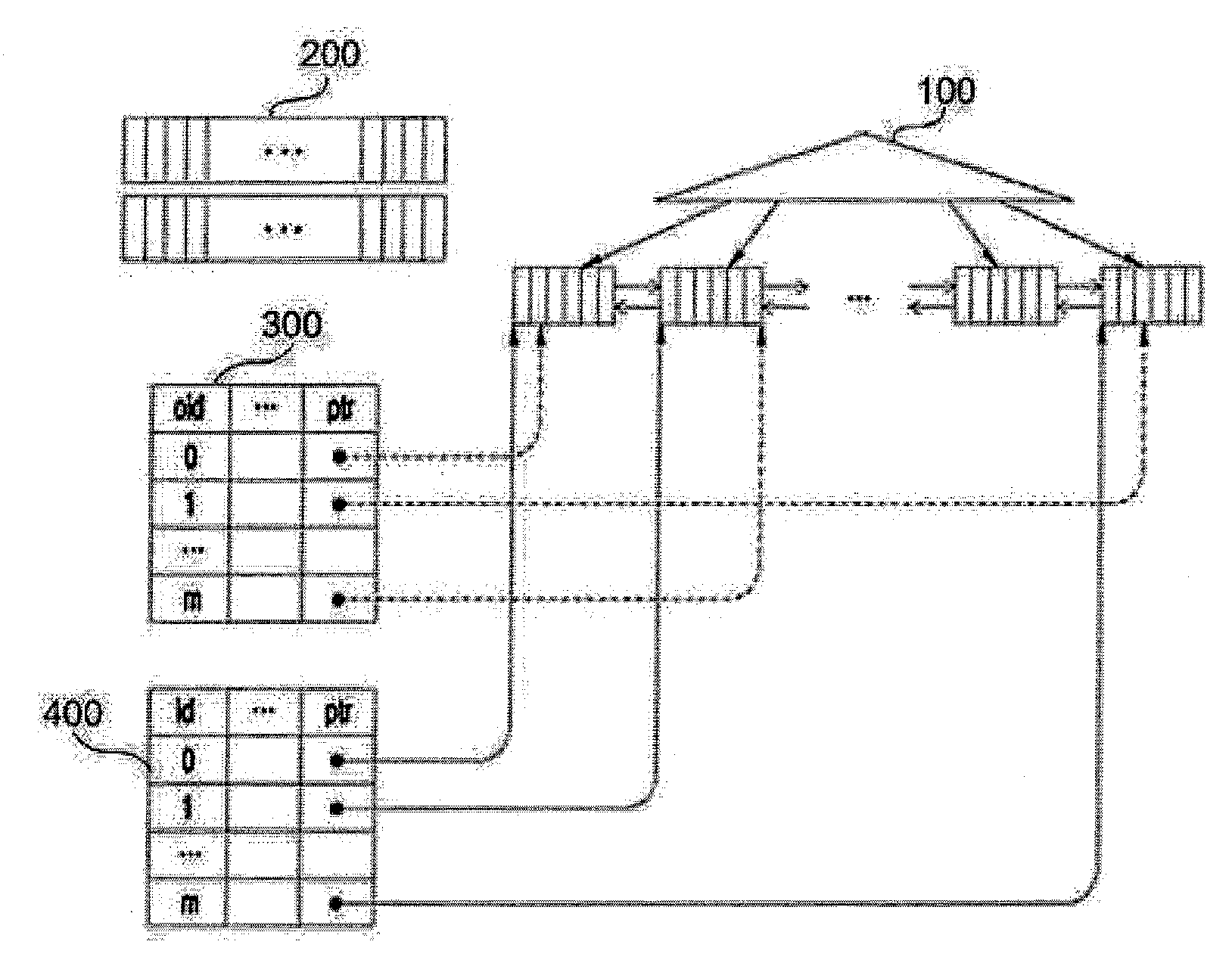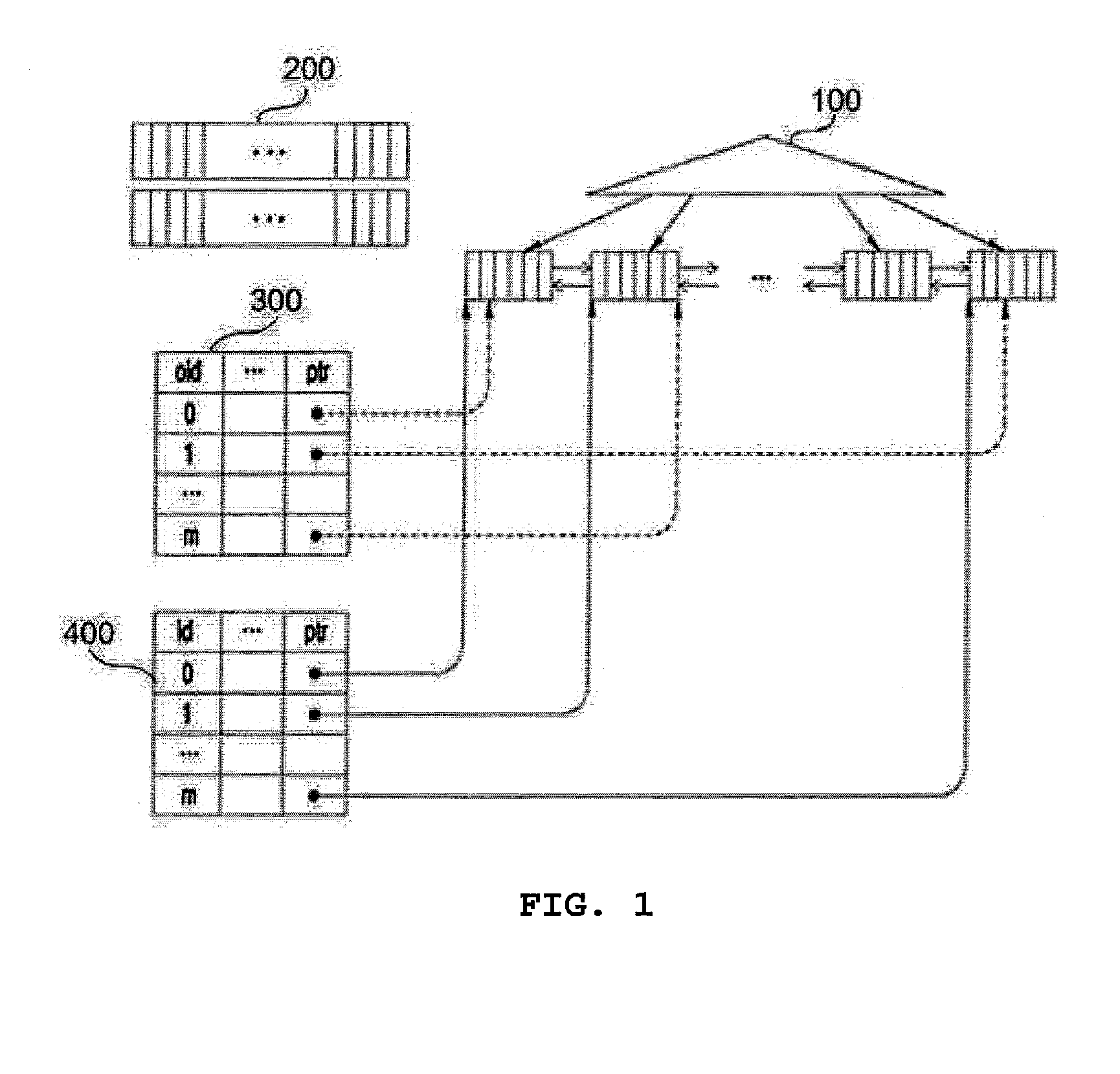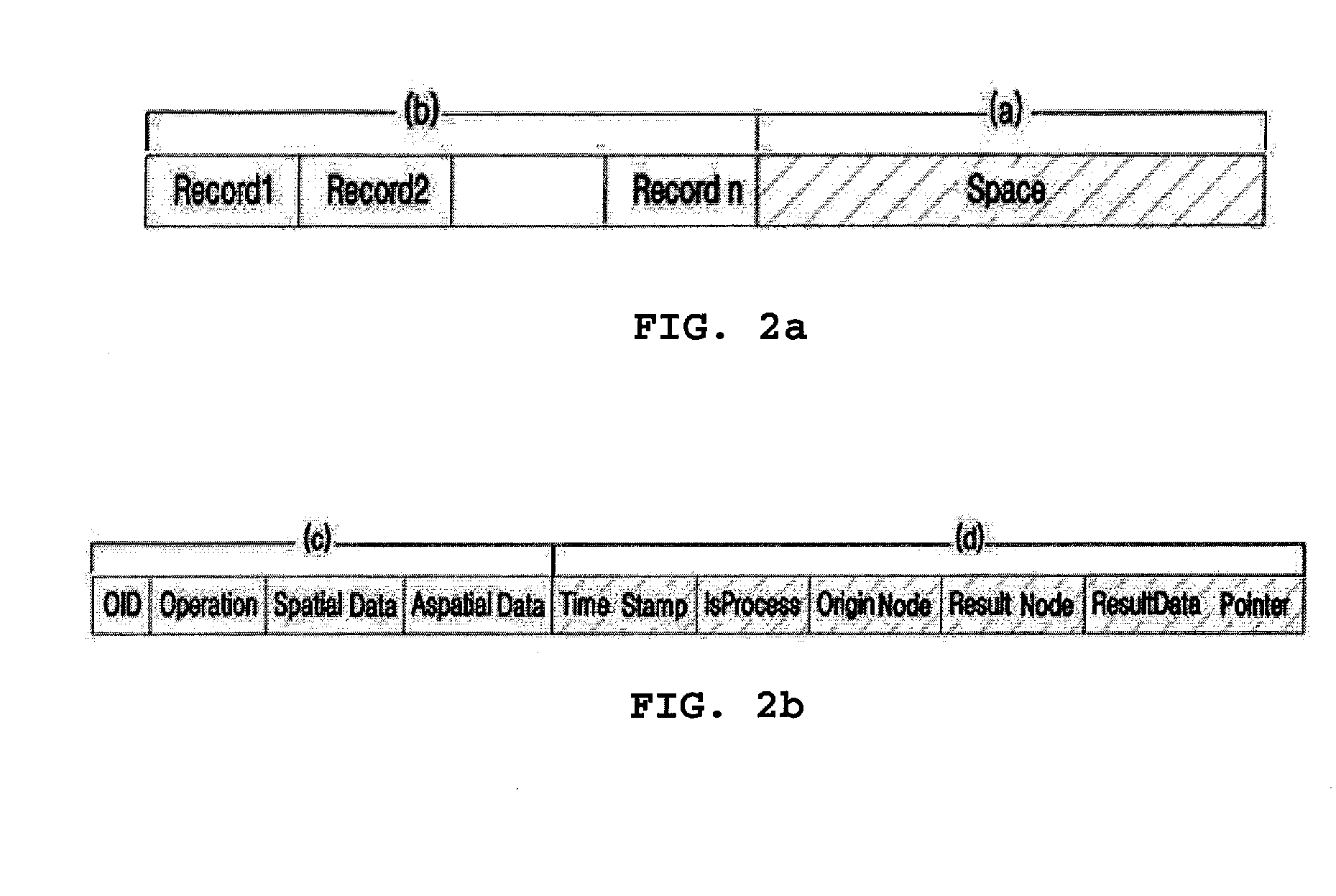Lazy bulk insertion method for moving object indexing
a moving object and bulk insertion technology, applied in the field of indexing moving objects, can solve the problems of deteriorating indexing performance, complicated to handle a current query, and no indexing technique that exhibits excellent performance for all location-based queries, so as to reduce the overall update cost
- Summary
- Abstract
- Description
- Claims
- Application Information
AI Technical Summary
Benefits of technology
Problems solved by technology
Method used
Image
Examples
Embodiment Construction
[0038]Hereinafter, embodiments of the present invention will be described in detail with reference to the attached drawings.
[0039]Before the present invention is described in detail, it should be noted that detailed descriptions may be omitted if it is determined that the detailed descriptions of related well-known functions and construction may make the gist of the present invention unclear.
[0040]Before an algorithm showing the entire buffer processing procedure according to the present invention is described, the overall index structure for a lazy bulk insertion technique of the present invention is described.
[0041]FIG. 1 is a diagram showing an index structure according to an embodiment of the present invention, FIG. 2A is a diagram showing the configuration of the buffer of a moving object indexing system according to the present invention, and FIG. 2B is a diagram showing the format of the record of FIG. 2A.
[0042]In the present invention, as shown in FIG. 1, showing the overall...
PUM
 Login to View More
Login to View More Abstract
Description
Claims
Application Information
 Login to View More
Login to View More - R&D
- Intellectual Property
- Life Sciences
- Materials
- Tech Scout
- Unparalleled Data Quality
- Higher Quality Content
- 60% Fewer Hallucinations
Browse by: Latest US Patents, China's latest patents, Technical Efficacy Thesaurus, Application Domain, Technology Topic, Popular Technical Reports.
© 2025 PatSnap. All rights reserved.Legal|Privacy policy|Modern Slavery Act Transparency Statement|Sitemap|About US| Contact US: help@patsnap.com



